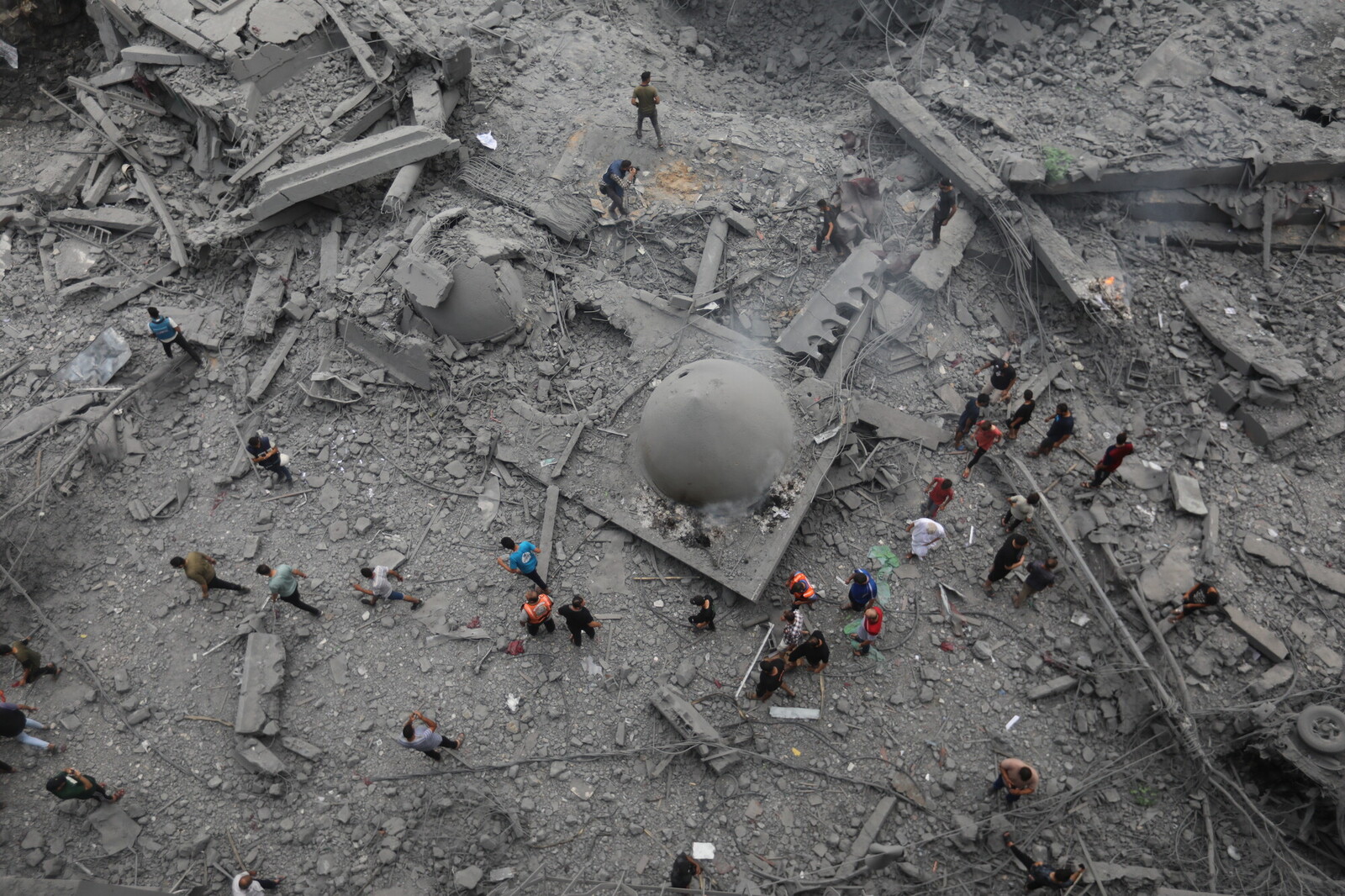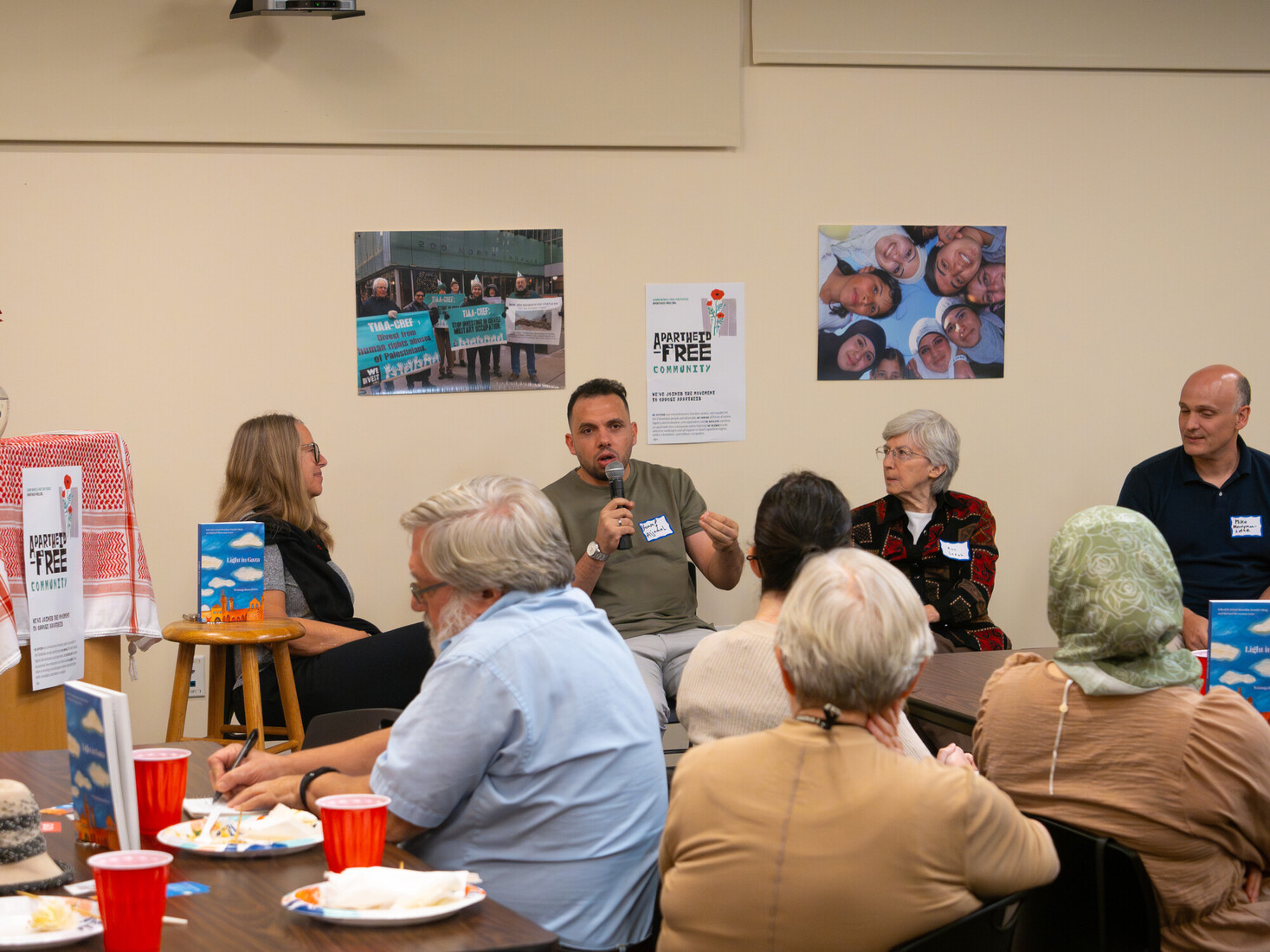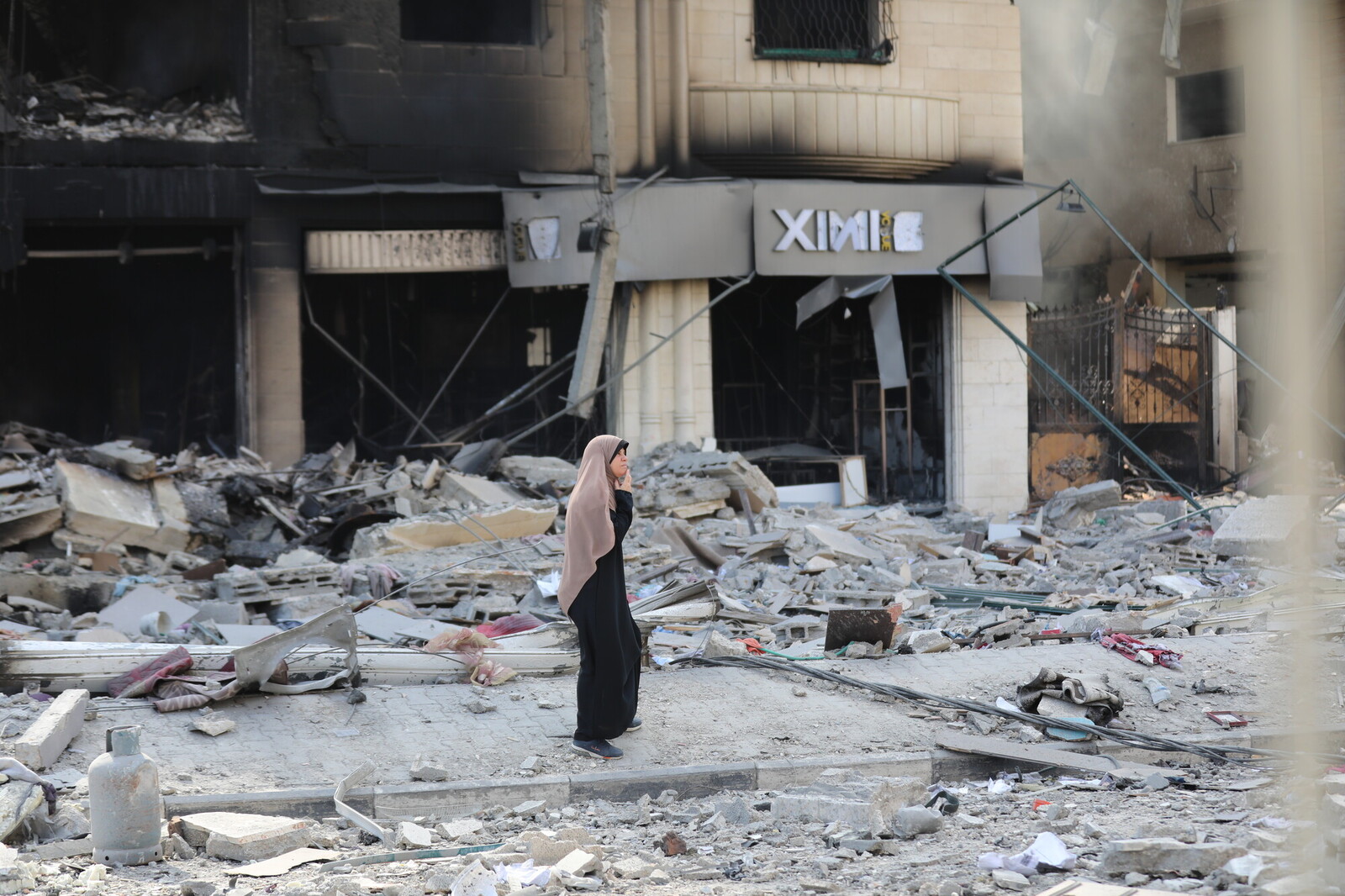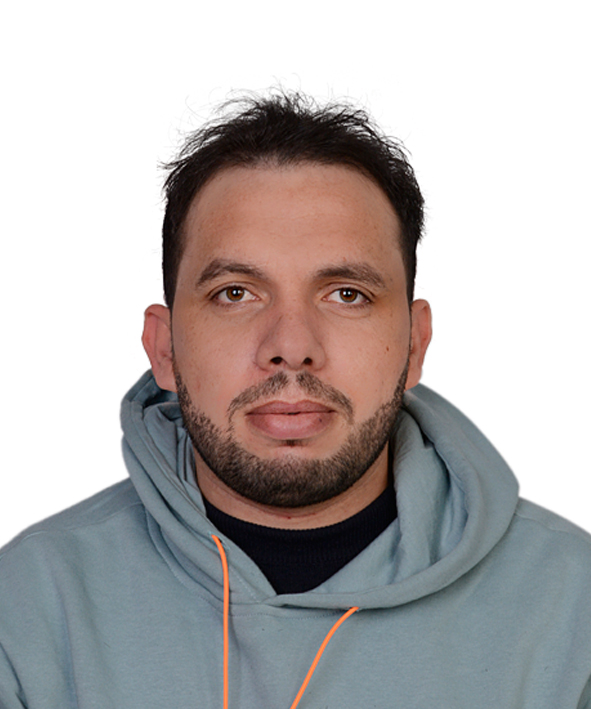
Ruins in Gaza. Photo: Motasem Murtaja
As a Palestinian who grew up in Gaza, I never imagined that Gaza would face genocide, let alone at this scale and speed and with deafening international silence. I thought that if the right-wing government in Israel ever unleashed its flames against us, international law would apply, at least partially. I believed that the current generation of Palestinian children would have a better life than I did in the refugee camps. I thought I would be able to visit Gaza and see my family, friends, and neighbors. I thought I would be able to enjoy Gaza’s golden beaches after finishing my graduate studies and settling down. Since Oct. 7, all of these plans and dreams have been shattered. A city of 2.3 million Palestinians on the Mediterranean Sea has been turned into rubble by Israel’s relentless war machine.
Since 2014, I have been contributing to the AFSC’s programs and activities. My first contribution was participating in a speaking tour to promote the book “Gaza Writes Back,” which was edited by my late mentor and friend Refaat Alareer, Gaza’s storyteller, and published by Just World Educational. While touring the U.S. to promote “Gaza Writes Back” and, later, “Light in Gaza,” published by Haymarket, I highlighted the need to end the Israeli siege on Gaza and connect Gaza with the outside world.

Yousef (center) speaks to community members in Philadelphia during the 2023 "Light in Gaza" speaking tour.
On my first AFSC speaking tour, Refaat and I bragged about the high literacy rates in Gaza and spoke of the city’s deep-rooted history and culture. We laughed when we told people that the stereotype that Palestinians in Gaza are fond of chilies is generally true. Gaza has a strategic coastal location and many spices came to the Arab World through its seaport. We spoke of the stubbornness of Gaza’s people, who after every tragedy, rise from the ashes, like the phoenix that is the symbol of the local council of Gaza Municipality.
On Oct. 6, 2023, I received a recorded video message from Palestinian elder Ahmad Alhaaj, who was 90 years old at the time. When I met Alhaaj in Gaza in 2011, he was the first Palestinian to introduce me to AFSC’s work in Palestine in 1948. He benefited from aid given by AFSC at the age of 15 when he became a refugee in Gaza. Ahmad refused to buy a house of his own, dreaming of returning to his village, Al-Sawafir al-Sharqiyya, which was ethnically cleansed during the Nakba. He believed that by buying a house, it meant he accepted his refugee status. In 1948, his mom insisted that he leaves Al-Falluja village, in which he was besieged, crawling on the muddy ground, to make it to a school in Gaza. On Jan. 17, 2024 Ahmad passed away in Gaza City, once again under bombardment and siege, and refusing to become a refugee again.
What is happening today is Gaza is no different from what happened during the Nakba in 1948. In fact, it is much worse. Since April 21, 283 bodies were uncovered from Nasser Hospital in Khan Younis.This discovery comes after Israel turned Gaza’s largest medical complex, Al-Shifa Hospital, into a graveyard, burning it to the ground and killing 400 Palestinians within the vicinity. Many were buried in mass graves.
Gaza today is a mass grave, not only for thousands of Palestinians killed by Israel but also for the conscience of the “free world.” For too long, Palestinians have been lectured about the value of human life and dignity, only to discover that the value of their lives and their dignity are exceptions to the rule. My friend Hassan, in the north of Gaza, has a Ph.D. in water engineering and has been publishing research, trying to find solutions to the issue of non-potable water in Gaza. He is now looking for a grave to bury his father in a dignified way instead of in his makeshift burial in a dirt street. Is Hassan’s father’s life and dignity not valuable?
Gaza today is a mass grave, not only for thousands of Palestinians killed by Israel but also for the conscience of the “free world.”
My town, Alnuseirat Refugee Camp, was badly damaged after Israel leveled its northern part along with Alzahra and Almoghraga towns, in order to expand an Israeli military road. This road now separates the southern part of Gaza from the North. Israeli bombs destroyed all high-rise buildings in the area, including, recently, my own apartment. In November 2023, Israel killed my childhood friend, Salah. He was killed when he went back to his home to get some food after being displaced from Alnuseirat camp. Both Salah and I were childhood friends with Ayman, who was also killed by Israel almost 10 years ago now, during its 2014 military assault on Gaza. My happy memories of Gaza are diminishing. There are only a few of my friends left.
As of this writing, the number of Palestinians killed by Israel since Oct. 7 totals more than 34,000, plus another 10,000 people estimated to be buried under the rubble. This includes 15,780 children and 10,091 women. Two million Palestinians in Gaza have also been displaced, as 131,200 homes have been destroyed and 281,000 have been partially damaged. Israeli bombings have destroyed 445 schools, 651 mosques, 322 health care facilities, 203 archeological sites, and three churches. Israeli bombings and ground invasions have killed 356 health professionals, 160 journalists, 42 civil defense workers, and 168 United Nations Relief and Works Agency (UNRWA) staff.

Destruction in Gaza. Photo: Motasem Murtaja
In Israel’s recent advancement towards Alnuseirat, the Israeli military used new tactics that appear designed to cause the maximum amount of death possible. For example, the Israeli military is using remote-controlled quadcopters that play the sounds of crying women and babies or the sounds of invading tanks to lure people into the street where they are then shot. Israel’s destruction of my town and the Gaza Strip as a whole has, in most cases, nothing to do with “military necessity.” Rather, attacks aim to create a reality in Gaza that forces Palestinians, 70% of whom are refugees, out of Gaza. This strategy of displacement is why Israel has been targeting UNRWA, the largest provider of aid in Gaza, which serves to remind Israel and the world that the refugees created by the Nakba are still displaced. Additionally, the Israeli military is targeting Palestinian journalists and educators who challenge the Israeli narrative.
Despite the grim reality in Gaza today, the situation should not push us into despair. This is not to say that the task ahead is easy. It is not. This is to say that Palestinians in Gaza have no other option but to survive and reestablish their lives in Palestine. The global solidarity movement from campuses across the U.S., to protests in cities across the world, is sending a message of hope to Palestinians back home. Gaza has been completely destroyed more than once throughout history, but it has risen from the ashes just like a phoenix. Its children will once again bring Gaza to life.
